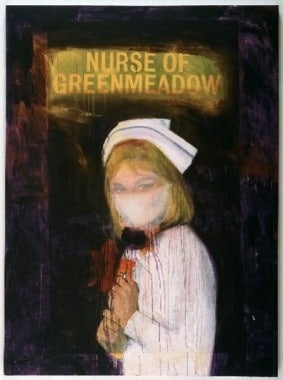Betting Only On Blue-Chip Western Artists Sees Funds Losing Out As Chinese, Southeast Asian Artists Selling Higher And Becoming Scarcer#

Last year, in the wake of the global economic crisis that saw asset values plummet across the board, a select number of art funds appeared on the scene, intent on satisfying demand for unique, diverse forms of investment. As the New York Times pointed out last fall, with investors indicating they were ready to get back in the game following signals that the worst of the crunch had passed, several new art funds have popped up in the last couple of years, some of them folding as the worst days of the crisis hit and others just starting up. However, as Jing Daily noted at that time, a weakness shared by some of these art funds was their propensity to overload themselves with Western -- primarily American -- artists, who are more vulnerable to shifting prices than some would think.
In the Times article, one fund in particular, Castlestone Management, was profiled as representative of the new breed of art fund, focusing primarily on postwar Western artwork:
A greater appetite for risk is shown by Castlestone Management, a New York-based asset manager specializing in alternative investments, which chose to open its Collection of Modern Art fund on May 31, when financial and art market turmoil was at its height. The fund invests in art by postwar, deceased or nonproducing artists, which Castlestone’s owner and chief executive, Angus Murray, said he considered “an irreplaceable real asset.”
However, since last fall, the improving auction market hasn't exactly translated to a windfall for Castlestone. From Reuters:
[Castlestone Management]'s performance has suffered since launch last April as prices in the art market have fallen.
Between April and December last year the fund's value fell 21.99 percent, while in the first four months of this year it is up 0.12 percent.
Packing an art fund with top Western artists might sound like a good idea, but it really misses the current dynamics of the global art world. In a world with strongly emerging economies, we've also seen the emergence of emerging art centers and artists. Considering home-grown collectors (who, like their Western counterparts also crave diversification) in the Asia-Pacific region are sending the prices of works by Southeast Asian artists from places like Indonesia, South Asian artists from India and East Asian artists from mainland China upward, while prices for Western artists with the exception of 20th-century juggernauts like Warhol or Picasso disappoint, it only seems natural that art funds would take a more global view when choosing their art mixes.

While the fund seems to be ticking upward, slowly, it's important to look at why exactly Castlestone doesn't seem to be benefiting as much as they could be even though the art market is fundamentally better off now than it was one year ago. Partly, it comes down to the fact that much of the art market's recent strong performance is due to the free-spending nature of new collectors from the aforementioned emerging Asian economies, particularly mainland China. Faced with fears of inflation, real estate fluctuations and volatility in the Chinese stock market, more Chinese collectors than ever are taking part in auctions as close to home as Hong Kong and as far away as New York or London, looking to get their hands on everything from antiquities to contemporary artwork.
The caveat here, though, is that these collectors aren't -- aside from a few outliers -- buying works by top Western artists. They're stocking up on works by Chinese artists, living and long-dead alike.
Thus, despite a generally more buoyant atmosphere in the auction world right now, the prices for works by many Western artists have remained somewhat anemic, to the peril of Western-heavy art funds. The question then becomes, if Western art funds with a Western focus continue to ignore Chinese (or Indonesian, or Indian) art, will home-grown funds dominate these areas?
We've already seen investment funds focusing on everything from education to real estate appearing in China, but art investment funds really haven't materialized yet. However, it's just a matter of time before they do, and we would assume they'd be well-connected with ascendant mainland Chinese auction houses like Poly and China Guardian as well as East Asian houses like Ravenel, Borobudur and Larasati, picking the best of contemporary Chinese and other Asian art rather than investing heavily in Western art.